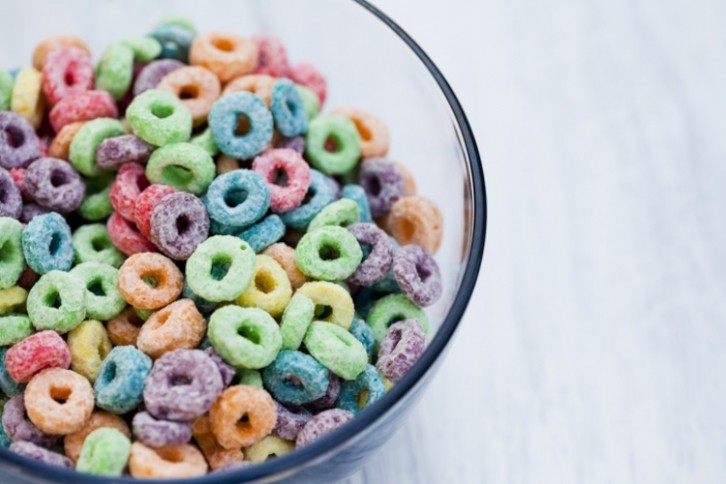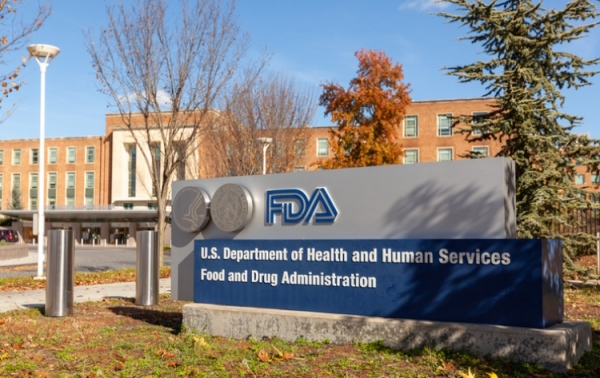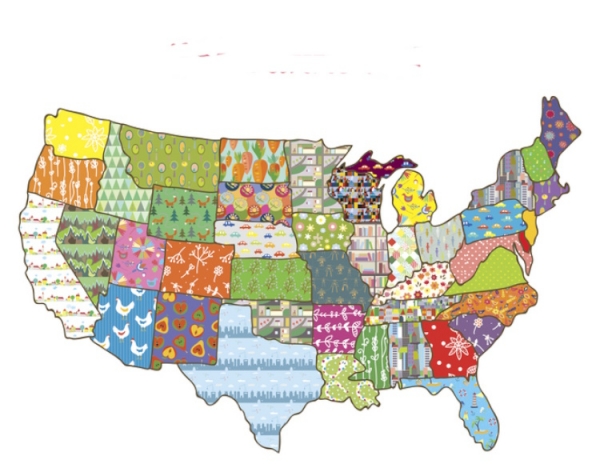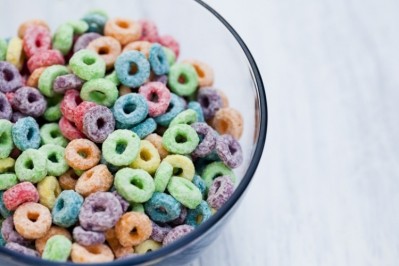‘Sensationalistic agenda’ or overdue legislation? Yet another California bill targets Doritos, Twinkies and Froot Loops that purportedly contain ‘toxic’ chemicals

Assembly Bill 2316 will prohibit school cafeterias from offering foods that contain titanium dioxide (used as a whitening agent) and six other artificial food dyes: Red 40, Green 3, Blue 1 and Blue 2, and Yellow 5 and Yellow 6.
According to Democratic Assemblymember Jesse Gabriel (D-Encino), research shows the six have the potential to adverse behavioral issues in some children, while titanium dioxide has already been banned by the EU and countries like South Korea and Saudi Arabia over concerns that it is potentially genotoxic.
Although there is a big trend towards clean label, artificial dyes today are still found in various foods, including breakfast cereals, baked goods, ice cream, candy, flavored milks, frozen yogurt and puddings.
If approved by the California Legislature, AB 2316 will remove a raft of popular treats like Doritos, Takis, Flamin’ Hot Cheetos, Froot Loops, Cap’n Crunch, Twinkies and Jolly Ranchers, among others, from the à la carte items – sold separately to canteen lunches – at public schools.
Gabriel, however, is adamant the legislation is not designed to target any specific foods or products, noting synthetic dyes are “nonessential ingredients … added to food to make them appear more appealing.” He is advocating the swapping them out for natural alternatives, such as turmeric, beet juice or pomegranate juice.
“The goal here is to encourage companies to make minor modifications to products sold in California if they want their products to be sold in California public schools,” said Gabriel.
“We know these companies are capable of making a safer version of their products.”
There is, however, an exception. According to the bill, elementary schools will be allowed to sell items that contain the prohibited dyes at fundraising events either off-campus or 30 minutes after the end of the school day.
Neurobehavioral impacts
Gabriel backed his argument with a comprehensive assessment undertaken by the California Office of Environmental Health Hazard Assessment (OEHHA) in 2021 that suggests a relationship between food dye exposure and adverse behavioral issues in children.
Concerns about possible associations between exposure to synthetic dyes and the exacerbation of symptoms of Attention Deficit/Hyperactivity Disorder (ADHD) in children have been swirling since the 1970s. The number of ADHD diagnoses has risen in the US in recent years, according to the Centers for Disease Control and Prevention.
The paper – published in Environmental Health in 2022 – “suggests that synthetic food dyes are associated with adverse neurobehavioral effects, such as inattentiveness, hyperactivity and restlessness in sensitive children,” wrote the authors.
“The neurobehavioral effects of synthetic food dyes in children should be acknowledged and steps taken to reduce exposure to these dyes in potentially susceptible children.”
Said Gabriel, “California has a responsibility to protect our students from chemicals that harm children and that can interfere with their ability to learn.
“As a lawmaker, a parent and someone who struggled with ADHD, I find it unacceptable that we allow schools to serve foods with additives that are linked to cancer, hyperactivity and neurobehavioral harms. This bill will empower schools to better protect the health and wellbeing of our kids and encourage manufacturers to stop using these dangerous additives.”
The US Food and Drink Administration (FDA), however, deems the dyes to be safe and has not commented on the bill as yet.
Time to reasses?
Thousands of chemicals are allowed for use in food sold in the US, many of which have not be re-evaluated for decades.
- Titanium dioxide hasn’t been assessed since 1966.
- Both Yellow Dye No. 5 and Blue Dye No. 1 were approved for use in 1931 and last reaffirmed for use by the FDA in 1969.
- Red Dye No. 40 hasn’t been evaluated for health risks since 1971.
- Green Dye No. 3 hasn’t been reviewed since 1982.
- Blue Dye No. 2 was last reviewed in 1983.
- Yellow Dye No. 6 was approved in 1931 and reaffirmed for use in 1986.
FDA under fire
Many – both opponents and allies – believe the government agency has again dropped the ball.
The FDA came under fire after California Governor Gavin Newsom signed Assembly Bill 418 – known as the California Food Safety Act, the first law of its kind in the US – to ban the use of four additives in food and beverages sold or manufactured in the state from 2027.
The four in question include potassium bromate, propylparaben, red 3 and brominated vegetable oil (BVO), which can be found in as many as 12,000 US products, especially candies, but also packaged breads, baked goods and cake decorating gels.
John Downs, president and CEO of the National Confectioners Association (NCA), was among the critics, noting the ban effectively told the American people “the FDA is incapable of keeping the food supply safe”.
He contended the California legislature had “completely overstepped their area of expertise” and called on the FDA to “defend its legal, fiduciary and moral responsibility as our nation’s chief and centralised food safety agency.
“We believe it is past time for the FDA to lean into this conversation, because a state banning FDA approved food ingredients and additives undermines consumer trust and creates confusion around food safety.
“The broader food industry and American consumers need to know that the FDA is prepared to prevent that slippery slope from becoming a reality, and that it has done and will continue to do the job the Congress has given it for more than 117 years: to evaluate – at a national level – the safety of food ingredients and additives.”
Patchwork of inconsistent state laws?
Several other US states have followed California’s lead.
In June 2023, New York Senate Bill S6055A was introduced, which also seeks to ban BVO, potassium bromate, propylparaben and red dye 3, as well as titanium dioxide (which was included in the original draft of the California Food Safety Act but then removed).
A second bill, S08615/A9295, was also introduced, requiring companies to disclose to the state of New York when they add chemicals – they self-determine as GRAS (general recognized as safe) and therefore don’t notify the FDA – to foods and drinks. While the FDA does approve a small fraction of new food chemicals, it does not require premarket approval, notice or its own safety review for the vast majority of chemicals, which instead are self-determined as GRAS by the producer.
In January this year, the Illinois Senate Bill 2637 was introduced to ban brominated vegetable oil, potassium bromate, propylparaben and red dye 3 from foods sold in the state. Missouri and Washington state have followed suit.
“It’s time for FDA Commissioner Califf to wake up and get in the game," a spokesperson for the NCA told Bakery&Snacks.
"These activists are dismantling our national food safety system state by state in an emotionally-driven campaign that lacks scientific backing. FDA is the only institution in America that can stop this sensationalistic agenda, which is not based on facts and science.“
Another opponent of state-level bans is the International Food Additives Council.
“[The] FDA is the federal agency charged with safeguarding the food supply, and those advocating for state bans are undermining FDA’s authority and causing unnecessary consumer confusion,“ said the Council’s executive director Robert Rankin.
Even Melanie Benesh, VP of government affairs at the Environmental Working Group – which is co-sponsoring Gabriel’s bill – contends the FDA is “asleep at the wheel".
“In the absence of federal leadership, states like California continue to step up to keep us safe from toxic chemicals we and our families enjoy,” she said.
Gabriel’s Assembly Bill 2316 should not be confused with Assembly member Chris Ward’s (D-San Diego) AB 2316 – signed into law last year by Governor Newsom – which requires the California Public Utilities Commission to assess new community renewable energy program proposals with a focus on serving low-income customers. This will make solar power an option for all residents, not just wealthier homeowners.
“In an ideal world, we would have a credible federal regulator that would be taking aggressive action to make sure that the food chemicals that we are exposed to every day, and the foods that we eat, and the foods that we feed our family, are actually safe.”
Benesh said some categories are more likely than others to feel the impact of the new bill, however, the EWG estimated the additives only appear in about 4% of lunches and less than 3% of à la carte items.
“There are some categories like cookies, chips, sugary breakfast cereals, that may be more likely to be tainted by these food chemicals and these colors. But even in those categories, there’s plenty of alternatives.”
AB 2316 will need to pass the California Legislature and be signed by Governor Gavin Newsom before it becomes law.
Study:
Miller, MD, Steinmaus, C, Golub, MS et al. Potential impacts of synthetic food dyes on activity and attention in children: a review of the human and animal evidence. Environ Health 21, 45 (2022). https://doi.org/10.1186/s12940-022-00849-9



















